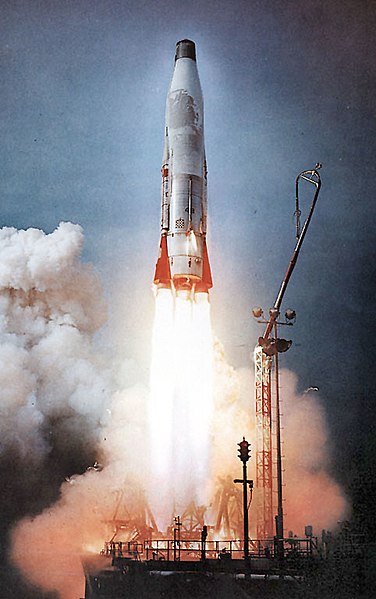The Titan II was an intercontinental ballistic missile (ICBM) developed by the Glenn L. Martin Company from the earlier Titan I missile. Titan II was originally designed and used as an ICBM, but was later adapted as a medium-lift space launch vehicle to carry payloads to Earth orbit for the United States Air Force (USAF), National Aeronautics and Space Administration (NASA) and National Oceanic and Atmospheric Administration (NOAA). Those payloads included the USAF Defense Meteorological Satellite Program (DMSP), NOAA weather satellites, and NASA's Gemini crewed space capsules. The modified Titan II SLVs were launched from Vandenberg Air Force Base, California, up until 2003.
An LGM-25C Titan intercontinental ballistic missile in silo, ready to launch
Titan-II ICBM silo test launch, Vandenberg Air Force Base
Mark 6 re-entry vehicle which contained the W-53 nuclear warhead, fitted to the Titan II
Titan II launch vehicle launching Gemini 11 (12 September 1966)
Intercontinental ballistic missile
An intercontinental ballistic missile (ICBM) is a ballistic missile with a range greater than 5,500 kilometres (3,400 mi), primarily designed for nuclear weapons delivery. Conventional, chemical, and biological weapons can also be delivered with varying effectiveness, but have never been deployed on ICBMs. Most modern designs support multiple independently targetable reentry vehicle (MIRVs), allowing a single missile to carry several warheads, each of which can strike a different target. The United States, Russia, China, France, India, the United Kingdom, Israel, and North Korea are the only countries known to have operational ICBMs.
A US Peacekeeper missile launched from a silo
An SM-65 Atlas, the first US ICBM, first launched in 1957
ICBMs can be deployed from transporter erector launchers (TEL), such as the Russian RT-2PM2 Topol-M
Artist's concept of an SS-24 deployed on railway








